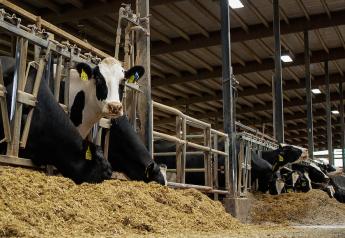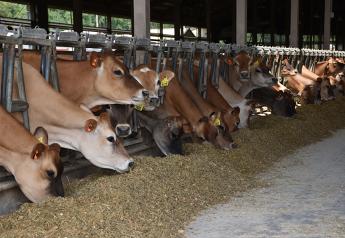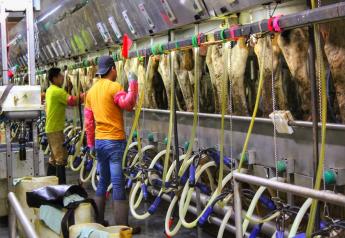Less Feed, Less Manure Limit-feeding heifers doesn’t affect production, reduces manure output

It doesn't take a rocket scientist to figure out that if you feed heifers less, you'll have less of that brown, smelly stuff coming out their back ends.
But it did take a couple of dairy science teams to figure out that limit-feeding heifers won't stunt growth or affect milk production after those heifers calve.
In studies at both the University of Wisconsin and Pennsylvania State University, there was lots of good news. When heifers were limit-fed diets that provided the same amount of energy and protein but with less bulk than control diets, lots of good things happened.
- First, limit-fed heifers grew at equal rates to heifers fed normal amounts of feed.
- After calving, limit-fed heifers produced just as much milk (and sometimes more, though not statistically different) than control-group heifers.
- Feed efficiency improved 30%.
- And the limit-fed heifers, well, defecated less. On a wet manure basis, heifers fed 90% of the amount fed to control heifers produced 12.5% less manure. Heifers fed 80% of the control amount produced 25% less manure.
Those numbers can add up quickly. If you limit-feed 1,000 heifers and they produce 10 lb. less manure each day, that means they'll produce 1,800 tons less manure annually, Hoffman says. That's no small number—given the rising fuel, labor and equipment costs to haul that manure off the dairy.
Keep in mind, however, that the amount of nitrogen and phosphorus excreted does not decrease with limit feeding. That's because the rations are designed to provide the same amount of energy, protein and minerals as normal heifer diets (see sidebar).
If you're considering limit-feeding heifers, there are a number of factors to consider:
- First, adequate bunk space is critical so all heifers can eat at the same time. "Heifers fed to 80% of their intake potential will consume all feed available within four to eight hours. Lack of adequate bunk space could result in uneven rates of gain,” Hoffman says. Limit-feeding heifers may not be possible in six-row freestall barns for that reason.
- Even though heifers are limit- fed, they will still sort feed particles first. "You'll need to push up feed 30 to 45 minutes after feeding so they can reach feed that they've pushed away,” Hoffman says.
- Heifers will often vocalize prior to feeding for about the first week they're limit-fed.
- When put back on full rations prior to calving, they adjust quickly to the high-fiber diets.
The need for phosphorus (P) in heifers is about half that for lactating cows.
So if you're feeding heifers bunk refusals from your lactating cows, you could be significantly overfeeding P. It probably won't harm heifers—but it will end up in the manure and could cause excessive P levels on heifer manure-hauled fields.
In an ongoing study at the University of Wisconsin's Marshfield Agricultural Research Station, 400 Holstein and crossbred heifers were split into P-supplemented (0.38%) and unsupplemented (0.28%) groups.
To date, there have been no differences in body weight or any other skeletal measurements. There also have been no differences in bone density, though the percentage of P in bones was slightly less in the unsupplemented heifers.
Bonus content:
- Click here to read the Spanish version of this story.
- Follow this link to view a pdf of "The Potential to Limit Feed Dairy Replacement Heifers" by P. C. Hoffman, Department of Dairy Science University of Wisconsin-Madison.







